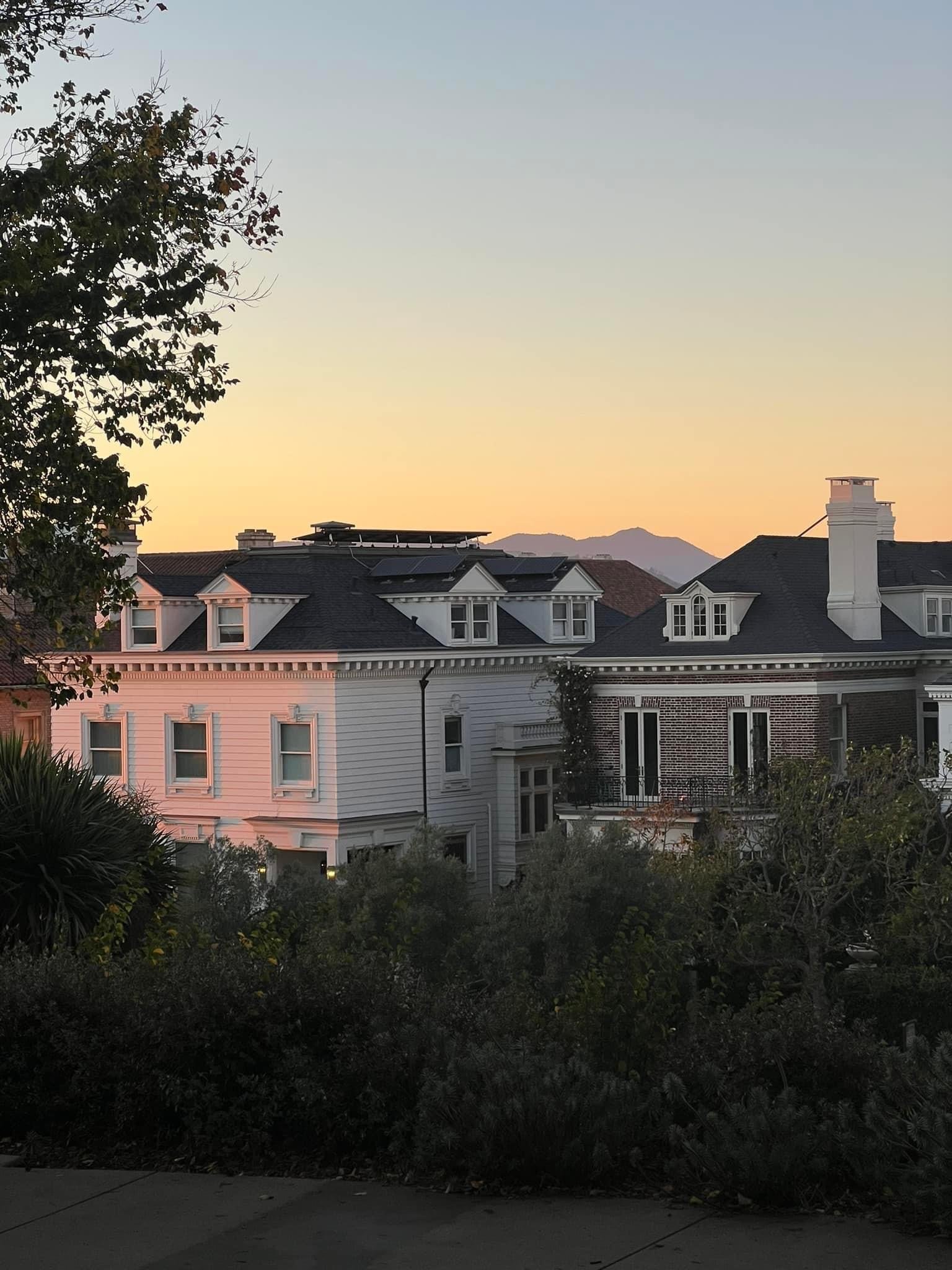This is a place where I discuss my work in more detail, share memories, explore new thoughts and gained knowledge, and reflect on what impacts me the most in life.
San Francisco, My Home
I was thirteen years old when I first visited San Francisco. I hated it. My mom booked a hotel in the Tenderloin (because it was cheap, of course) so you can imagine why my first impression of the city was tainted – dodging piles of shit, garbage, needles, avoiding getting accosted, and plugging my nose from the stench. Now, having lived here for five years, I can walk to the Tenderloin eighty percent less scared. Out of all the places in the world, it’s crazy I ended up somewhere I told myself I’d never return to. I visited the city again three years later, at sixteen years old, with my mom, her friend, and my childhood best friend. It was a completely different experience, and I had a blast.
When I was in eleventh grade, a representative from the San Francisco Art Institute came to speak at my high school about their programs. I was not planning on applying there, but decided it wouldn’t hurt to learn more about it. No one showed up to the meeting except me. I was fortunate enough to have a one-on-one with her, where we discussed my portfolio and she gave me insight on what to include in an application. Little did I know at the time, they were desperate for new students because they were in financial trouble.
I ended up applying to eleven universities all over the nation, as well as my top choice the University of British Columbia in Vancouver. My second choices were the ones in California, San Diego State University and San Francisco Art Institute. I knew I wanted to be on the west coast, where there was warmer weather and more nature, but also more opportunities in the film industry. When I got denied at UBC and accepted at SFSU and SFAI, but only offered a scholarship at SFAI, the decision was basically made for me. Having thankfully had a better second experience with the city, I decided to give San Francisco a chance. My first two years at SFAI were amazing. I created a lot of art, explored the city and cities across the bay, and made so many great friends and connections. I even braved living in the Tenderloin dorms for the first year! The school unfortunately shut down after my first two years, and we were all forced to transfer. I finished my last year and a half at the California College of the Arts. But SFAI was such a landmark of the city. There was no better place to be when learning how to be a San Franciscan, and the views from our campus were beautiful. The school was founded in 1871 and SFAI library’s large physical and digital archive helped me learn more about San Francisco artists and how they built their careers in this city.
One of the galleries at SFAI had an original Diego Rivera Mural fresco. A few hidden murals throughout the building were also discovered (see in this gallery below). There is so much history within the buildings, parks, and people of this city, and I was and am fortunate to be in the middle of it.
I am so fascinated with the architecture here – as are most people. I have always loved sifting through Dwell Magazine, or looking at Instagram accounts for architecture, and even going to open houses for fun. There are so many ways to design a house, and the rounded windows, bold or wacky colours, and layout of the Victorian homes intrigue me. You can walk just three blocks and pass by so many different styles of buildings. Each one has character, and can be so unique from the next (and not just in colour).
The city’s hills also contribute to making San Francisco a city unlike any other. Standing on top of one, I observed from a distance all the colourful layers of mish-mash architecture, and appreciated this city even more, for its bold personality and for creating a new definition of beauty. Another exciting quality of the city is all its thoughtfully designed neighborhood parks. It doesn’t matter where you live, there’s always a park not too far away. Even each park is unlike another. I’ve lived in cities before where many parks looked the same. I currently live closest to Lafayette Park, where you can walk the many windy pathways, play tennis, set up a hammock, a picnic, bring your dog to the dog park, or observe the boats in the ocean from the north side.
There are plenty of places, such as the Presidio, Golden Gate Park, Lands End, and any of the beaches that make you feel like you’ve left the city. The city planners have achieved a good balance between nature and urban life, and I’m so glad they also see the importance in maintaining all these spaces.
I don’t find myself ever getting bored in this city. San Francisco has always inspired me to make the most out of my life, and to continuously create art, no matter what I may be going through. I have found that I am more motivated in this city than anywhere else. Perhaps also because I am the most happy here than I’ve ever been in any city.
Having met so many people of different generations, I feel this city welcomes every type of person, at any stage in life. That’s what is so special about it. I’ve lived in four different neighborhoods in the city and two across the bridge, in Oakland, and have experienced so much in all of them. So many great neighborhoods, so many beautiful sights, so many possibilities to find your place, and your people.
Raised by Creatives
My childhood was very fun. It’s something I definitely look back on often.
It’s these childhood memories that I carry with me throughout every aspect of life. I smile when thinking back to the time I first visited Berlin at 7 years old, learning about its history and experiencing a different culture. Or the time we went to Disney World, and my mother slapped Piglet’s ass. How could I forget a moment like that? My crazy, creative, open-minded parents are the reason I am who I am. I grew up mostly embarrassed by the things they would do, and that helped me subconsciously learn that the world may judge, but what’s most important is how you feel in the world.
This concept is something they took into their art. When I found my passion for filmmaking and photography, they made sure to show me the ropes, but explained these are simply tools that I may use in whichever way I want. To create whatever I want.
My mom’s art has provoked many, and one can truly see just how much she loves to experiment when creating photographs or editing them. My father’s scripts and commercials are just really fucking funny. He strives, every day, in everything he does, even if it’s just an instagram post, to be as original as possible. He hates being predictable.
I’ve always been able to share my art with them – from the first thought and throughout the entire process, until I reached a point of satisfaction with my work. They provide a safe space for us to debate, challenge, and speak honestly about what we create. Their support is not only “Good job!” or “That’s beautiful!” but also a conversation, in which I learn more about how I want my audience to feel when viewing my work.
Throughout my childhood, my parents and I would make short films together. I was a bit of an inventor between the ages of 6 and 10, and we would often create videos of me explaining my new inventions. In elementary school we made a short film about littlest pet shops adventuring down to the kitchen for juice, and another about a snowman we built that would swear at us in french. In middle school we made a music video to Thrift Shop by Macklemore & Ryan Lewis. There are so many different types of videos to make, and I challenged myself to try out all of them.
In terms of photography, I would bring my camera everywhere. My mom and I would frequently stop at places to snap some pics and then continue on with whatever it was we were doing. My interest in cinematography really sprouted from this – not film. By college, I began to really merge the two together and sharpen my skills.
My films and other work would not be the same if it weren’t for my parents’ talents and willingness to help me create my work and guide me over the years.
Behind the Scenes of Aquaphobia
My Senior Thesis Film had been a project I’d been looking forward to and planning for about a year. It began with a feeling of overwhelming anxiety, especially from Covid-19, and a longing to get out of the city and into nature.

The very first image I had in my head, even before the concept, was of someone being stranded in the middle of a body of water. This could have been subconsciously influenced by a Taylor Swift music video, in which she’s playing a grand piano floating in deep waters during a storm, but probably also from my newfound love for droning. For so long I had been terrified of flying a drone, because of the possibility of crashing, but with the help of my avid drone-flying boyfriend at the time, I was able to learn and practice while being somewhat guided. I knew I wanted to fly the drone for this film, and use all the equipment I had to my advantage, and so I began thinking of ways in which the drone served a more solid purpose within the film’s overall meaning.
I then began creating visuals in my mind that intrigued me, or evoked a strong emotion that I could relate to. This is where my love for nature came in, and perhaps my missing my cottage. I wanted my film to be filled with images of nature, as diverse as I could find, mostly because I have a passion for exploring new places. Having done much research on locations in California, Ontario (Canada), and Prince Edward Island, the beauty and appeal of a new place won me over in the end. My mom had just recently moved to Prince Edward Island, Canada, so there was a perfect opportunity to explore the land for a few weeks to then figure out where I wanted to shoot my film.
The next step was developing the concept. Aquaphobia was to be a visual metaphorical translation of what it means to overcome stress and gain control of your mind. I knew that nature would play a huge role in the meaning of my film, I just needed to figure out how. At the time of pre-production, I had been working on a project with a friend of mine who studies contemporary modern dance. This gave me the idea to incorporate dance within nature, and give it a meaning that could relate to my own life. The idea of dancing in nature became a metaphor for the act of temporarily escaping reality to find peace within your own mind. I then thought of all possible places I would like to dance, and realized one cannot dance in deep water! So, water would be a perfect metaphor for the anxiety-ridden mind. I became excited when thinking about the colloquial term “drowning in work” and how it could translate to the screen with my character “drowning in her thoughts and fears” quite literally in a body of water, with the possibility of drowning.
People would ask me, “Why can’t she just swim to shore?” and I told them she is too far, but to avoid confusion about the story, I would title my film “Aquaphobia”. This word would give people an idea of the film before watching it, while still being vague enough to excite curiosity. At first, some might have taken the word literally, but I was hoping to deliver a story more unexpected, and suggest an alternate meaning of the word.
Logline: A young girl with a fear of water is mysteriously stranded in the middle of the bay. To find safety, she must use her imagination and change her state of mind.
Creating a shot list for my concept was one of the more challenging aspects of pre-production. I’m the type of person who has a hard time making decisions, and when creating films, I for-see so many possibilities in terms of how to visually represent each scene. I made a draft of the framing, techniques, and angles for every scene, and it took me about a month of playing it all back in my head to come to a more precise shooting plan. This decision was also made after a better understanding of how much time I had to shoot at each location, how many people were helping me, an honest assessment of my production skills, and of course my budget. While I didn’t choose to include all my favourite shots, it was a decision that had to be made in order to facilitate the overall production process. I believe that finding this balance did indeed set me up for more success on set, and allowed me to get 90% of the shots within the planned timeframe.
Something I wished I had prepared better for was learning how to use the DJI Ronin S gimbal that I rented on the island. Instead of testing it out the day of the shoot, I should have taken the time to do so the day before, even if it would have costed me more money. I learned a lot from producing this film, as well as how important it is to do research beforehand. What I was mostly thankful for was my mom’s family friend lending us their canoe and helping as production assistant last minute. Shooting the water scenes was especially challenging for everyone, whether it was the consistent manoeuvring of the canoe against the slight current, yelling ‘action’ and my actress being too far to hear, or slowly running out of time and stressing about not getting all the necessary shots. I would not recommend filming in moving water unless you have a lot of time on your hands!

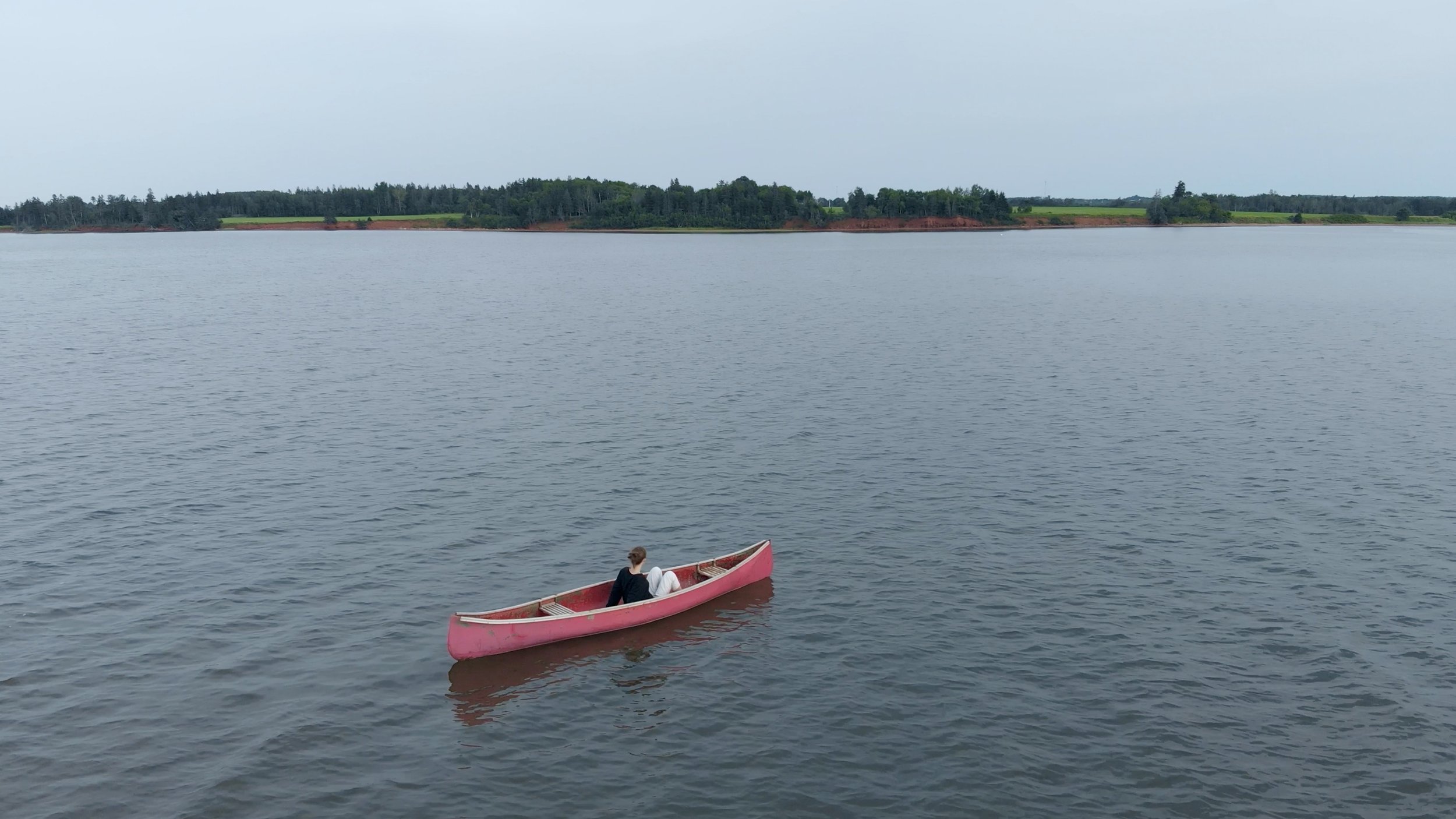
Filming on land was probably the best couple of days I had that entire year. Not only was I in new and exciting environments – I was doing what I love. I ended up experimenting a lot with shooting, as well as directing. My original actress/dancer missed her flight the day before the scheduled shoot, but my step-sister was staying with us and offered to fill in. I was shocked at how quickly she adapted and was able to understand the story and my vision. She was very enthusiastic to help out and it was a comfort to know that there was still hope for my film to happen on schedule, after so much planning! Having not studied dance, and with her theatre experience, she acted and danced with so much professionalism, grace, and ease, and her unique personality really shone through. After playing back the footage, I could not have pictured my film any other way – she was exactly what the story needed.



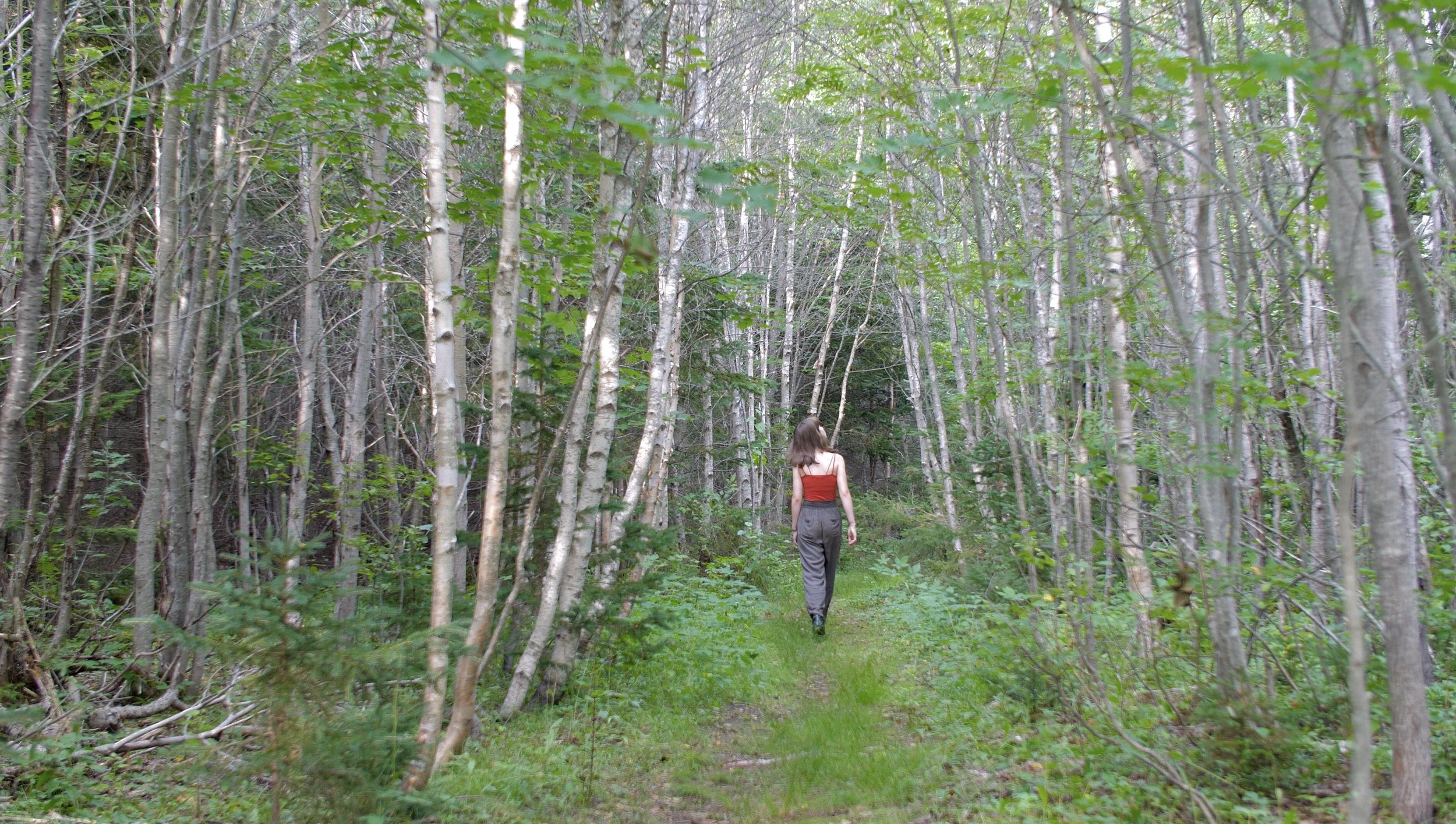



Post-production of this film was very exciting. I never got sick of seeing the same images over and over, because nature can never bore me. Not to mention I still had some freedom in terms of choosing the best shots to create a cohesive dance sequence. What I had planned on doing before shooting the film was writing my own piano composition, but ultimately the stress of graduating and keeping up with all my other classes made this difficult. I happened to tell someone I had met briefly before about my film, and he told me he was studying music composition and scoring. The timing couldn’t have been more perfect, and so I asked if he would look at my rough cut and put something together. After a few discussions of the overall mood and tempo, and a couple revisions, the end result had me falling in love with the dancing sequence all over again. His stunning and intriguing composition elevated the beauty of nature and my dancer, and provided a better contrast between the gloomy water scenes.
What I want people to feel after watching this film is hope that in their own way they can create a safe space to go to when dealing with stress or intrusive thoughts. In my film, that space is in the mind, but I encourage everyone to explore physical spaces too. I believe that a majority of life is spent in our heads, and that being able to control our emotions is crucial to our well-being, as well as beneficial for our growth.
Cabin in the Woods
My love for nature and the importance it has in my life comes mostly from where I spent my summers as a kid – our cottage. Growing up in Toronto, Canada, a densely populated, industrial, and loud city, I was fortunate to have been raised in a family with a deep passion for the outdoors and the insight of how nature can impact and shape our lives for the better.









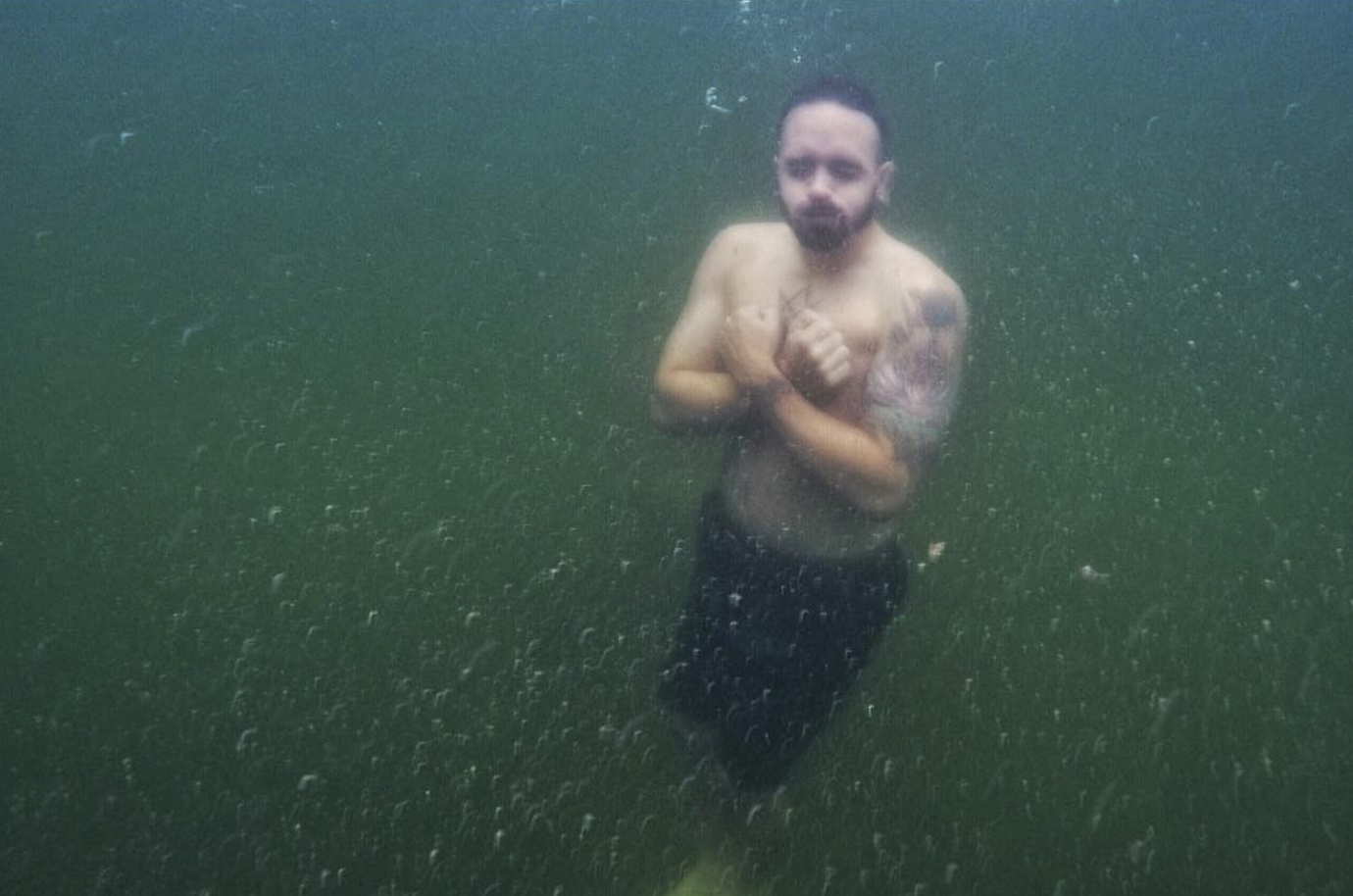





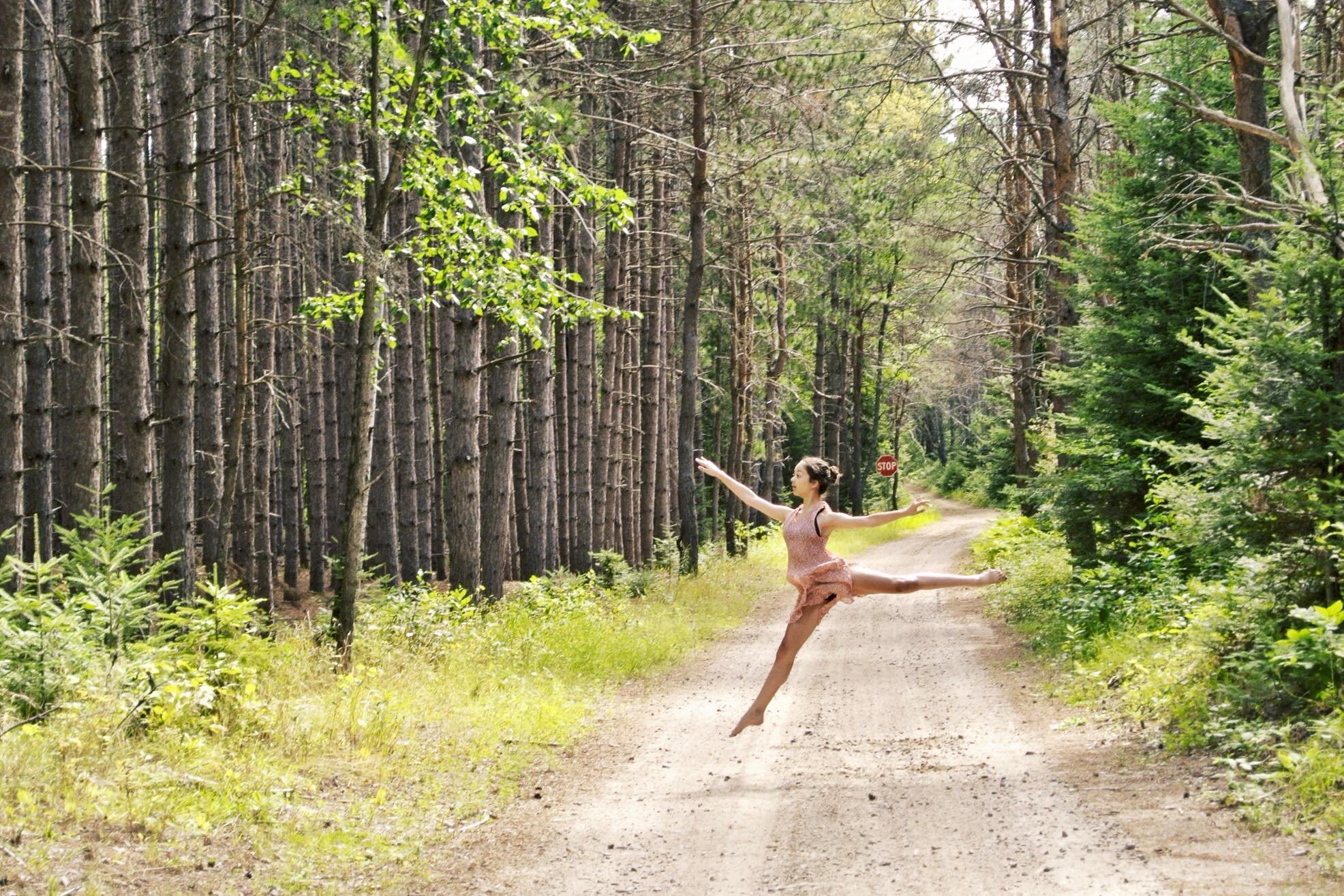


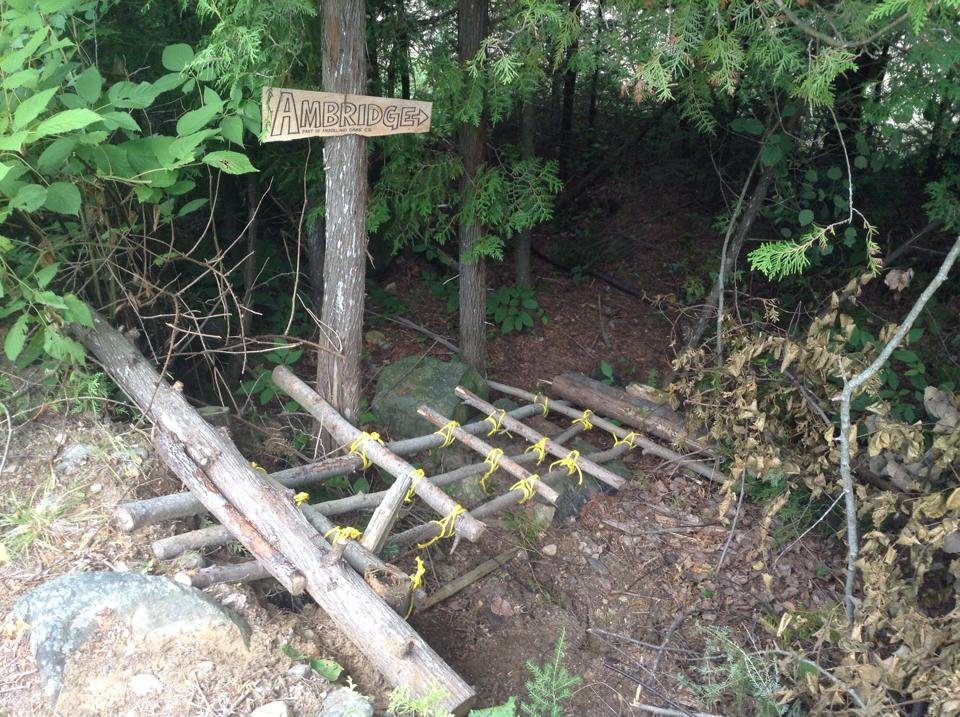



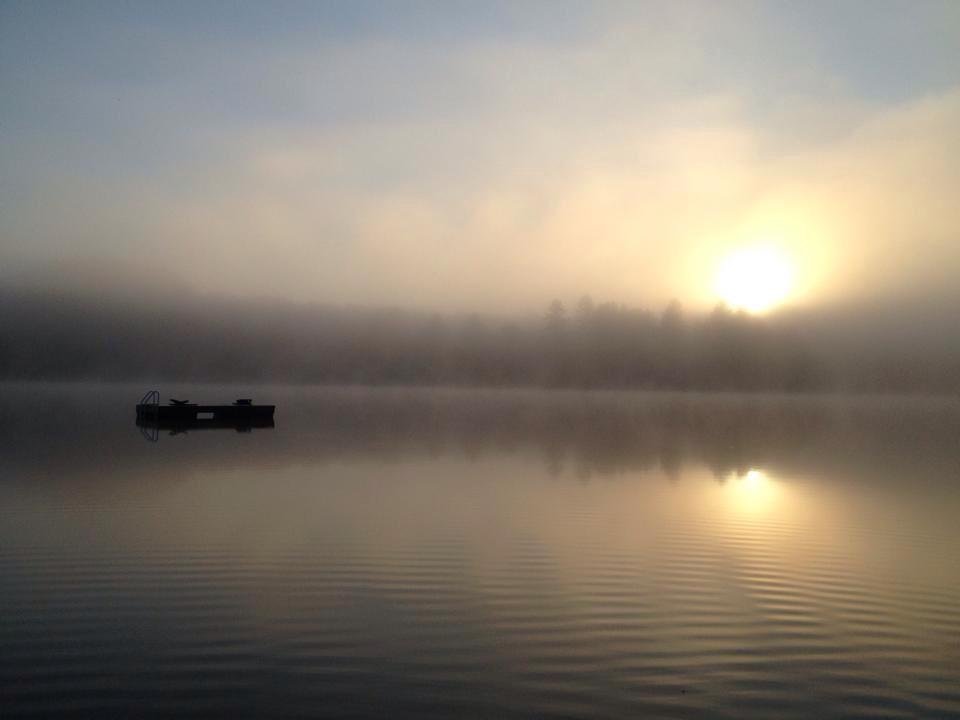


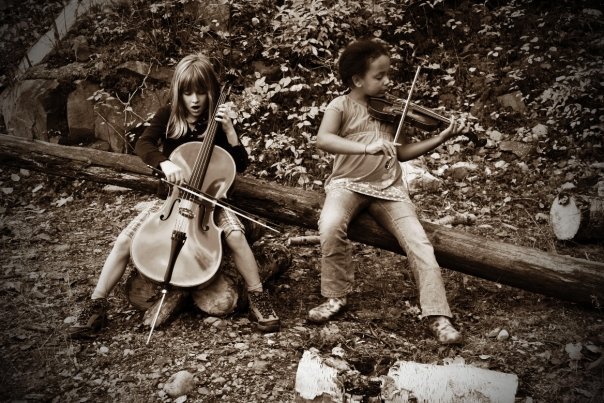
At eight, I was a very active child, always outside building things, collecting caterpillars, riding my bike, or climbing trees with friends. When my parents had told me they were buying a cottage on a small lake, I was eager to share the news with everyone. My friends who owned a cabin thirty minutes from ours had told me how I HAVE to try frog catching (with my bare hands of course).
I was excited to have a place where I could explore the woods and lake, and all its creatures with unrestrained curiosity and freedom. Being in an off-grid cabin, up on a hill with a view of the lake, and only two other neighbours in sight, it really felt like our own little world.
I’d spend mornings on our deck, in my hammock chair, eating breakfast, while the hummingbirds cautiously ate from the feeder beside me. Afternoons would be full of swimming, kayaking, sailing, snorkeling, net fishing, hiking (on trails bushwhacked by yours truly), painting with mom on the deck, or playing board games with dad in the “C Lounge” by the lake. Nights were spent by candlelight, where we had BBQ dinners, game nights, campfires, s’mores, and horror stories (once even made a horror film). Then, we’d fall asleep to sounds of the cicadas and loons, as well as mosquitoes that got trapped indoors.
I felt especially bonded to my friends and family when at the cottage exploring or experiencing nature together.
While there were times I got frustrated or felt too isolated, those two to three months every year, for roughly nine years, taught me how to appreciate serenity and depend on nature. To this day, when looking for comfort, I’ll always rely on the smells, sights, and sounds of the forest, water, and animals to keep me centered.




















